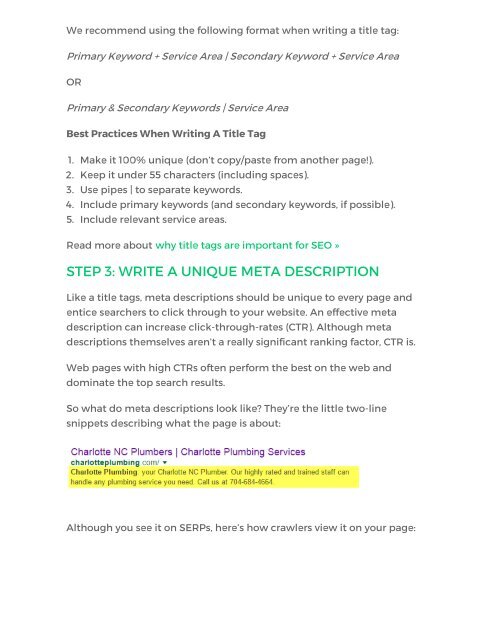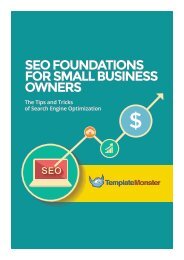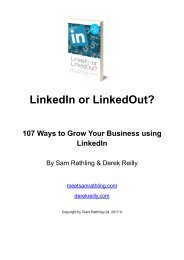You also want an ePaper? Increase the reach of your titles
YUMPU automatically turns print PDFs into web optimized ePapers that Google loves.
We recommend using <strong>the</strong> following format when writing a title tag:<br />
Primary Keyword + Service Area | Secondary Keyword + Service Area<br />
OR<br />
Primary & Secondary Keywords | Service Area<br />
Best Practices When Writing A Title Tag<br />
1. Make it 100% unique (don’t copy/paste from ano<strong>the</strong>r page!).<br />
2. Keep it under 55 characters (including spaces).<br />
3. Use pipes | <strong>to</strong> separate keywords.<br />
4. Include primary keywords (and secondary keywords, if possible).<br />
5. Include relevant service areas.<br />
Read more about why title tags are important for <strong>SEO</strong> »<br />
STEP 3: WRITE A UNIQUE META DESCRIPTION<br />
Like a title tags, meta descriptions should be unique <strong>to</strong> every page and<br />
entice searchers <strong>to</strong> click through <strong>to</strong> your website. An effective meta<br />
description can increase click-through-rates (CTR). Although meta<br />
descriptions <strong>the</strong>mselves aren’t a really significant ranking fac<strong>to</strong>r, CTR is.<br />
<strong>Web</strong> pages with high CTRs often perform <strong>the</strong> best on <strong>the</strong> web and<br />
dominate <strong>the</strong> <strong>to</strong>p search results.<br />
So what do meta descriptions look like? <strong>The</strong>y’re <strong>the</strong> little two-line<br />
snippets describing what <strong>the</strong> page is about:<br />
Although you see it on SERPs, here’s how crawlers view it on your page:














